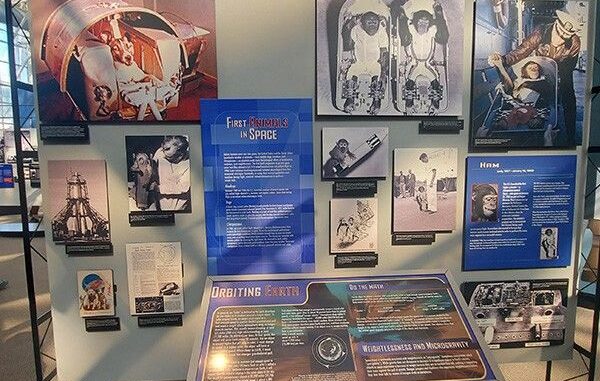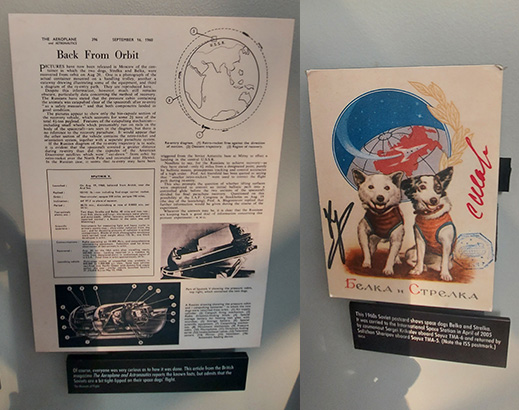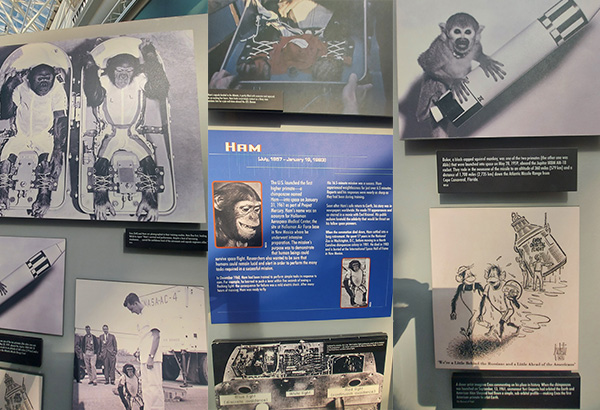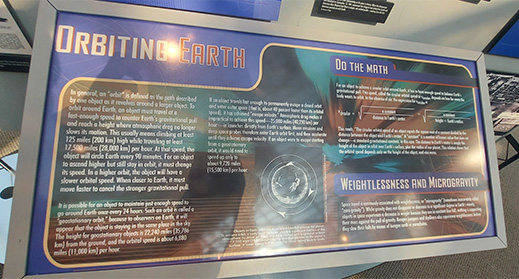
SEATTLE, USA — Did you know that the first Earth organisms to go into space were fruit flies aboard a US V-2 rocket launched into sub-orbital flight in 1946?
A small but poignant exhibition in Museum of Flight is dedicated to the first animals in space, providing trivia and archival photos of the first Earth species to reach space before humans did.
“Before humans were sent into space, the United States and the Soviet Union launched a number of animals – most notably dogs, monkeys and chimpanzees – so scientists could study the biological effects of acceleration, radiation and weightlessness,” part of the exhibit’s description reads.
After assessing the chimpanzee’s vital organs and mental capabilities, they were then trained to do simple tasks on space, the description added.
Monkeys
Philstar.com/Deni Rose M. Afinidad-Bernardo
“Between 1948 and 1960, the US launched monkeys of several species into sub-orbital flight aboad V-2, Aerobee, and Jupiter rockets. Some died during flight or on impact when returning to Earth,” the exhibit’s description reads.

Philstar.com/Deni Rose M. Afinidad-Bernardo
Dogs

Philstar.com/Deni Rose M. Afinidad-Bernardo
Perhaps, the best-known animal space traveler is a Soviet dog named Laika, but did you know that Laika has a surname?
“Laika (Barker) is undoubtedly the best-known non-human space traveler,” the museum says in the description.
Launched onboard Sputnik-2 on November 3, 1957, Laika became the first animal to orbit Earth.
“Working in a rush of political pressure, Soviet scientists made no plans for a reentry, and the dog was not recovered. Laika died long before Sputnik-2 burned up in the atmosphere five months later.”

Philstar.com/Deni Rose M. Afinidad-Bernardo
Chimpanzees

Philstar.com/Deni Rose M. Afinidad-Bernardo
In 1961, Ham became the first chimpanzee in space when he made a sub-orbital flight aboard a US Mercury-Redstone rocket.
To test his psychological capacity during space flight, Ham was trained to do simple tasks like pulling levers when lights turn on. He returned to Earth a little dehydrated, but otherwise, was in good condition.
Later that year, another US chimpanzee, Enos, orbited the Earth aboard a Mercury spacecraft and returned home safely.
“Animals have always been important to the space program,” wrote Angela White in a research paper filed by the National Aeronautics and Space Administration (NASA).
“The United States flew monkeys in rockets between 1948 and 1952, 10 years before the first orbit of the Earth by a man. The Soviet Union used dogs in their space program — a Soviet dog orbited the Earth in Sputnik II for a week in 1957.”
While there are “certain activist groups” that “have advocated the total elimination of animal use in research, including space research, because of reports of inhumanity in too many research laboratories,” White wrote that “a ban on animal use in research would decrease the number of animals killed and tortured each year in the nation” but “such a ban would severely cripple the space program.”
“Monkeys were tested in the early years of NASA to determine whether it was safe for humans to fly into space,” White further wrote.
“After Yuri Gagarin of the USSR became the first man to orbit the Earth, space animals were all but dropped in favor of using humans. However, recently, more animals are going into space, mainly for research purposes. On Spacelab 3 (SL-3), 26 animals experienced weightlessness and were studied thoroughly afterward, yielding valuable data.”
She assured that “so far, NASA has an excellent record of humane treatment of animals.”
“Animals are a valuable part of the space program and NASA should support sending more animals in the future,” she wrote. “The history of animals in space is not nearly complete. Such a history would show how well animals have been treated in the space program.”

Philstar.com/Deni Rose M. Afinidad-Bernardo
___
Editor’s note: The tour to Seattle was hosted by Philippine Airlines to promote tourism in the area. At no stage does the host organization have a say on the stories generated from the coverage, interviews conducted, publication date and story treatment. Content is produced solely by Philstar.com following editorial guidelines.


Be the first to comment